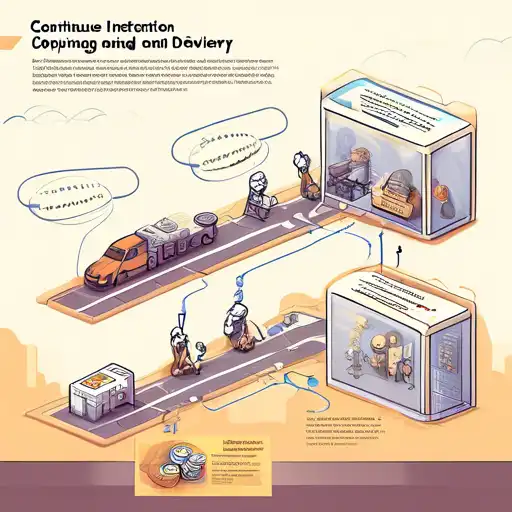What is Continuous Integration and Delivery?
Continuous Integration (CI) and Continuous Delivery (CD) are pivotal practices in modern software development, aimed at improving the efficiency and reliability of software releases. By automating the integration and delivery processes, teams can achieve faster development cycles, higher quality products, and more satisfied customers.
The Core Principles of CI/CD
At its heart, CI/CD is about automating the software release process. Continuous Integration involves automatically testing and merging code changes into a shared repository several times a day. Continuous Delivery extends this by ensuring that the code can be released to production at any time, with the push of a button.
Benefits of Implementing CI/CD
- Faster Release Cycles: Automating the build and test process reduces manual errors and speeds up development.
- Improved Code Quality: Early detection of bugs and issues leads to higher quality software.
- Enhanced Collaboration: CI/CD encourages more frequent code integrations, fostering better teamwork.
- Reduced Risk: Smaller, more frequent updates mean less risk associated with each release.
How to Get Started with CI/CD
Implementing CI/CD requires a cultural shift towards automation and continuous improvement. Start by integrating a CI/CD tool into your development workflow, such as Jenkins, Travis CI, or GitHub Actions. Ensure your team is on board with the principles of CI/CD and invest in training if necessary.
Best Practices for CI/CD
- Automate Everything: From testing to deployment, automation is key to CI/CD success.
- Keep Builds Fast: Optimize your build process to ensure quick feedback loops.
- Monitor and Improve: Continuously monitor your CI/CD pipeline for bottlenecks and areas of improvement.
- Secure Your Pipeline: Incorporate security checks into your CI/CD process to catch vulnerabilities early.
Challenges and Solutions
While CI/CD offers numerous benefits, teams may face challenges such as resistance to change, tool integration issues, or initial setup complexity. Overcoming these challenges requires clear communication, choosing the right tools for your team's needs, and starting small with your CI/CD implementation.
Conclusion
Continuous Integration and Delivery are essential practices for any team looking to improve their software development process. By embracing CI/CD, teams can enjoy faster releases, higher quality software, and a more collaborative and efficient workflow. Start small, focus on automation, and continuously seek ways to improve your CI/CD pipeline for the best results.
For more insights into optimizing your development process, check out our guide on Agile Methodologies and how they complement CI/CD practices.
